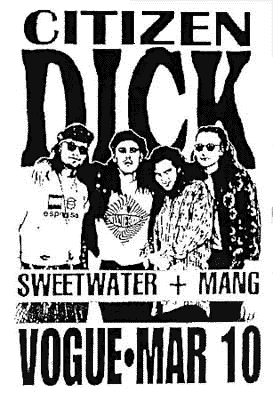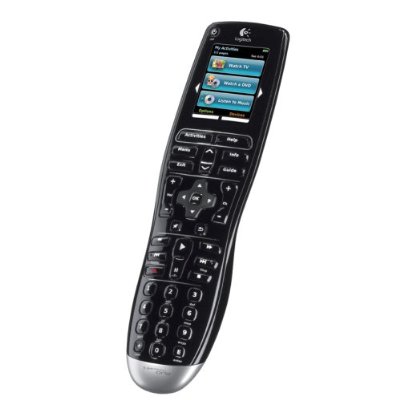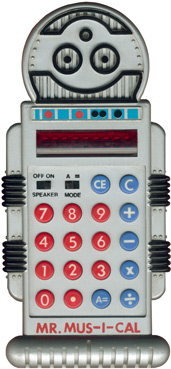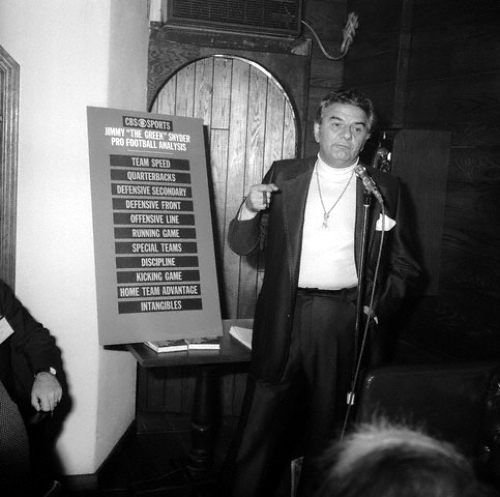Redesigning Everything
I am totally fascinated with a contest called the 'Dollar ReDe$ignProject'.
The project, organized by brand strategy consultant Richard Smith, is a tongue-in-cheek attempt to revitalize the American economy via a 're-branding' of some of our most visible and tangible manifestations of economic activity, the set of US Federal Reserve notes. 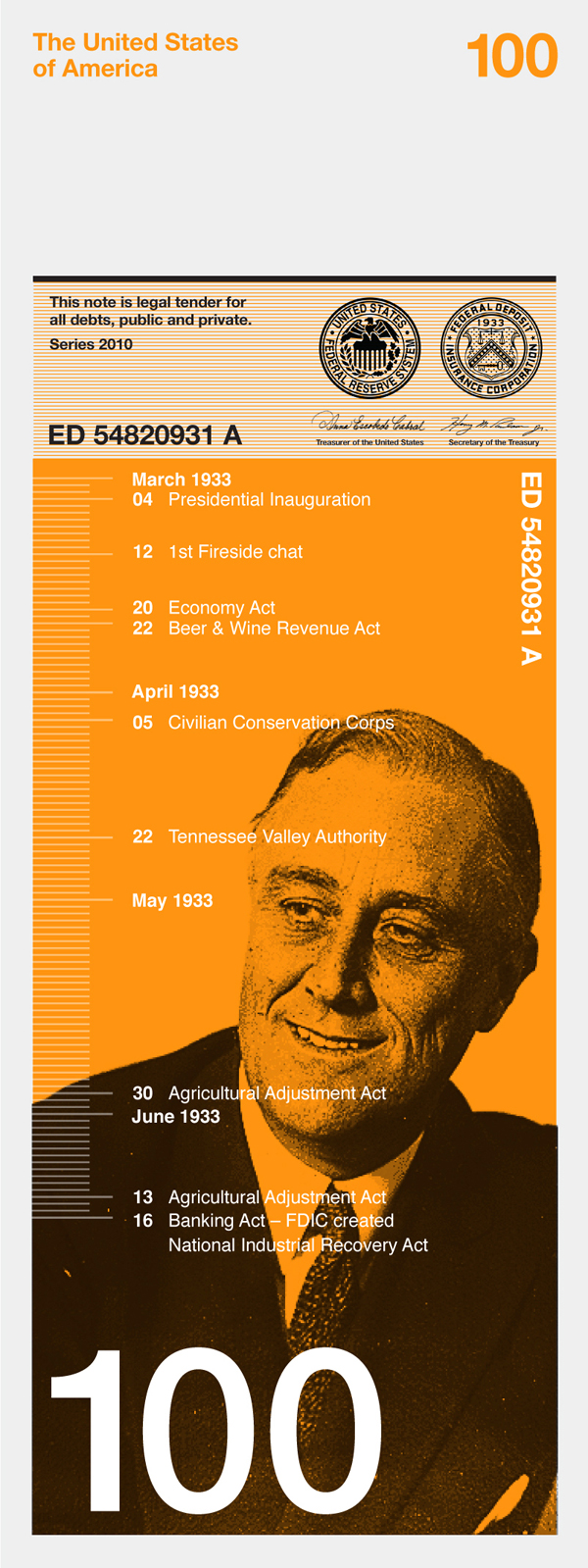
From the 'About' section of the Project site:
It seems so obvious to us that the 'only' realistic way for a swift economic recovery is through a thorough, in-depth, rebranding scheme – starting with the redesign of the iconic US Dollar – it's the 'only' pragmatic way to add some realistic stimulation into our lives! Therefore, you must take part and we really want to see what YOU would do.
Various designers, students, folks that like to play around with Illustrator and Photoshop have offered their suggestions for redesigning the set of bank notes that for the most part still maintain their basic design structure from the 1930s.
One interesting example from the contest, submitted by the graphic design firm Dowling Duncan is on the right. Their designs for the various notes and denominations attempt to link the face value of the note to an historically significant figure or event. In the example on the right, the re-imagined $100 note refers to President Franklin Delano Roosevelt's famous 'First 100 Days', when a number of significant legislative actions were approved to combat the economic depression of the 1930s.
Besides the collection of really engaging, creative, and amusing submissions (somewhere in there you can find a 'Steve Jobs' $50 bill), the project and the enthusiasm of the design community to participate reveal some interesting lessons that I think could be relevant in an organizational setting as well.
Sacred cows - What 'wrong' with the $1, $5, or $100 bills? Well I suppose nothing. But could they be improved? Absolutely. Could that improvement actually drive downstream benefits far beyond the redesign itself? Quite possibly. But unless the attempt is made, you'll never know.
The crowd - Sort of an obvious conclusion, and one that doesn't need to be pointed out yet again. Or does it? It still seems to me that more organizations and even smaller divisions in organizations don't do a great job soliciting ideas from their version of the 'crowd' for improvements, creative ideas, and even feedback. Making the submissions public, improves the process as well. The better ideas surface more readily, more people can get involved in improving the ideas, and the entire process gains more relevancy and a larger degree of trust. For almost every issue, someone out there is passionate about it, and likely would want to get involved if given the opportunity.
Fun - Looking at the redesigned currency is fun. Creating the designs certainly had to be fun for the firms and individuals that have participated. Even judging the contest I imagine is going to be a blast. What is wrong with a little fun in the organization? Unless you are in one of the lucky (or smart) organizations that has managed to navigate the last few years unscathed, introducing a bit of fun into the routine would be most certainly welcome.
What do you think?
Is redesigning the dollar bill a good idea?

 Steve
Steve
